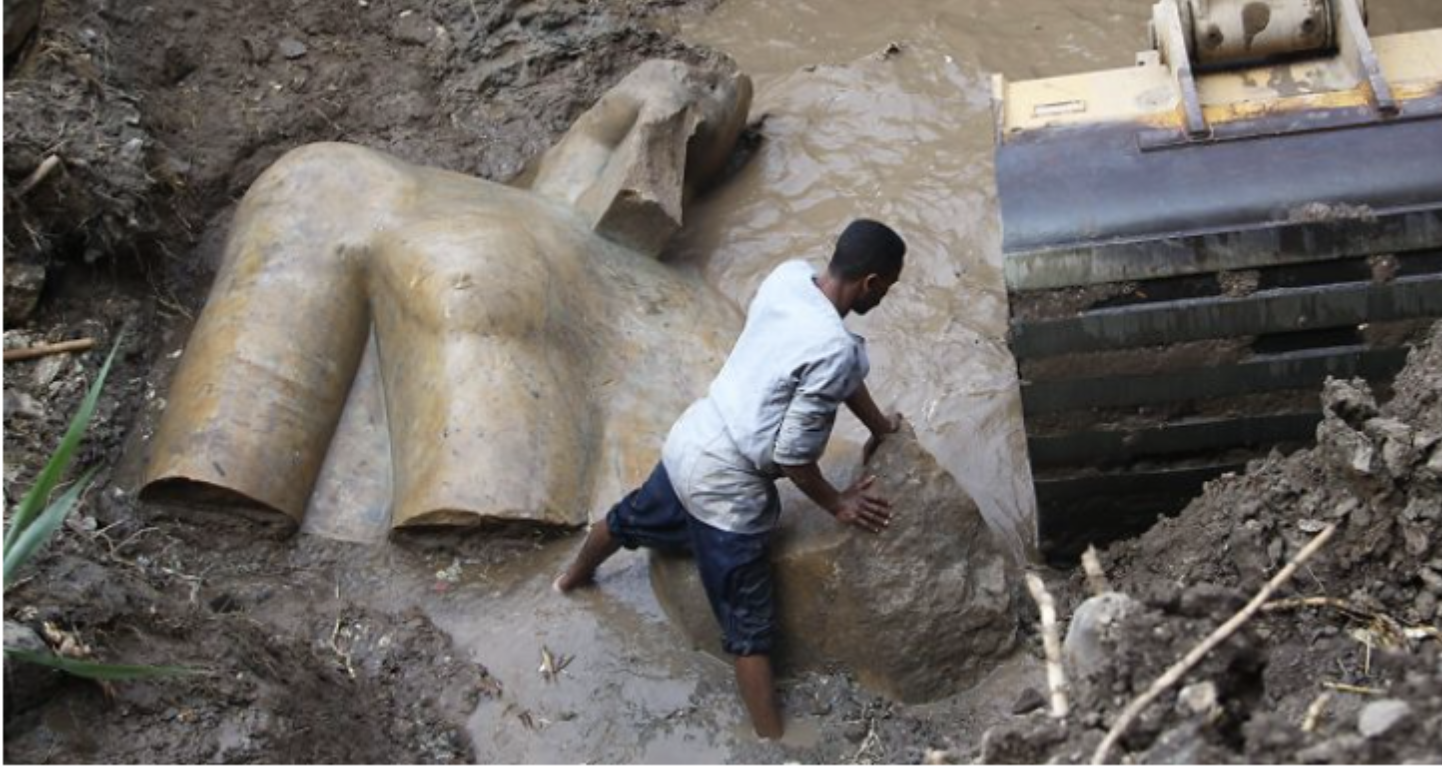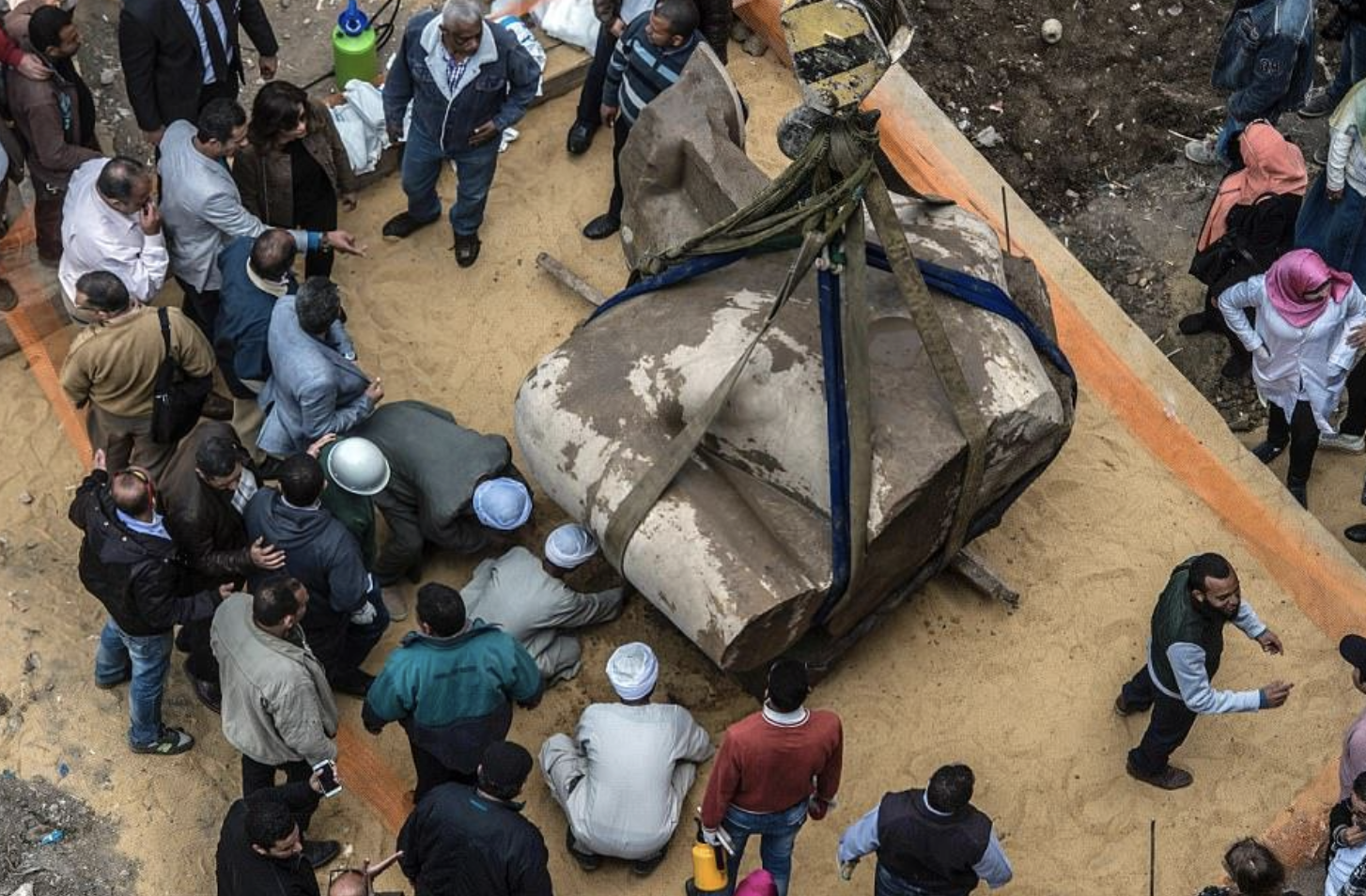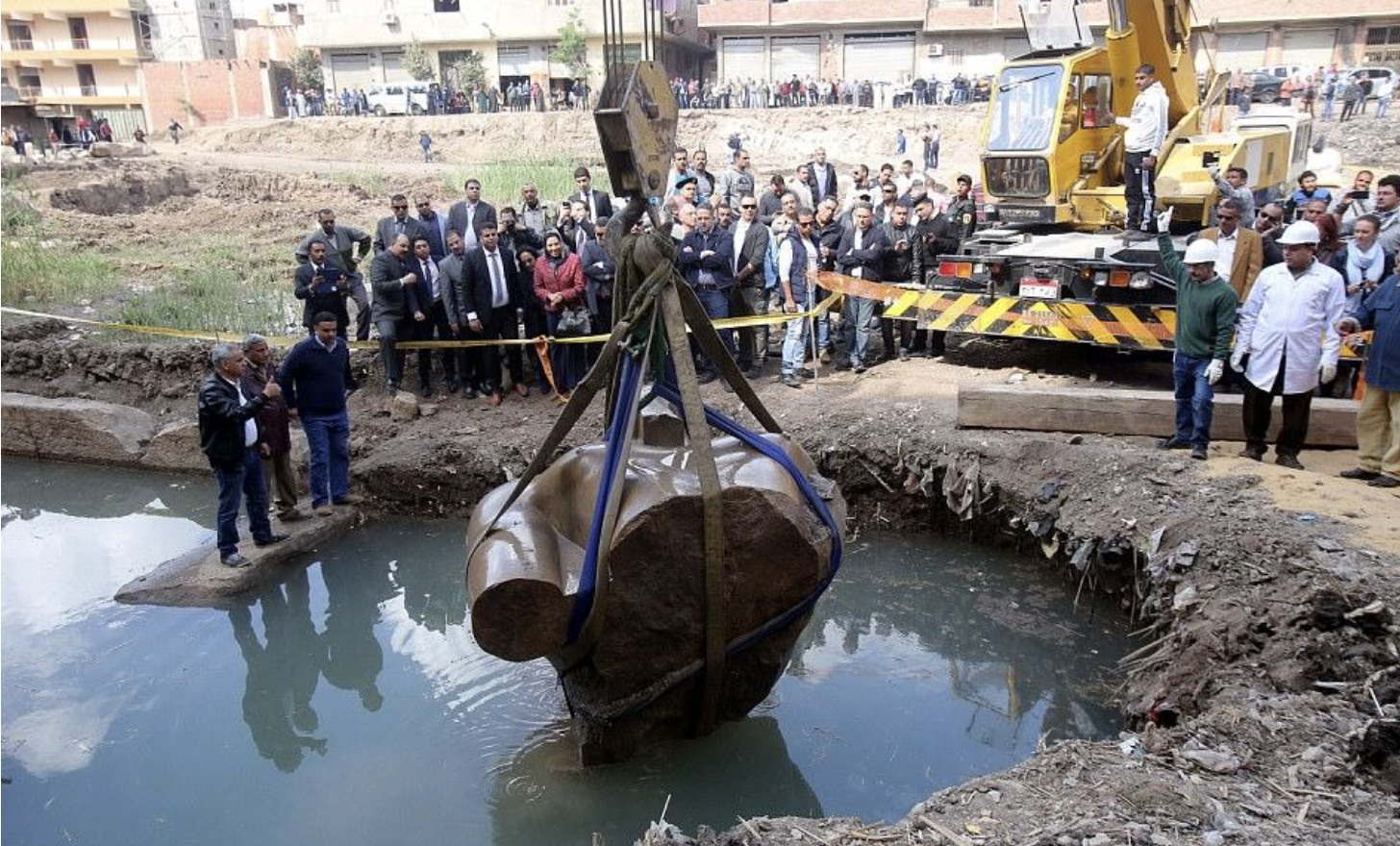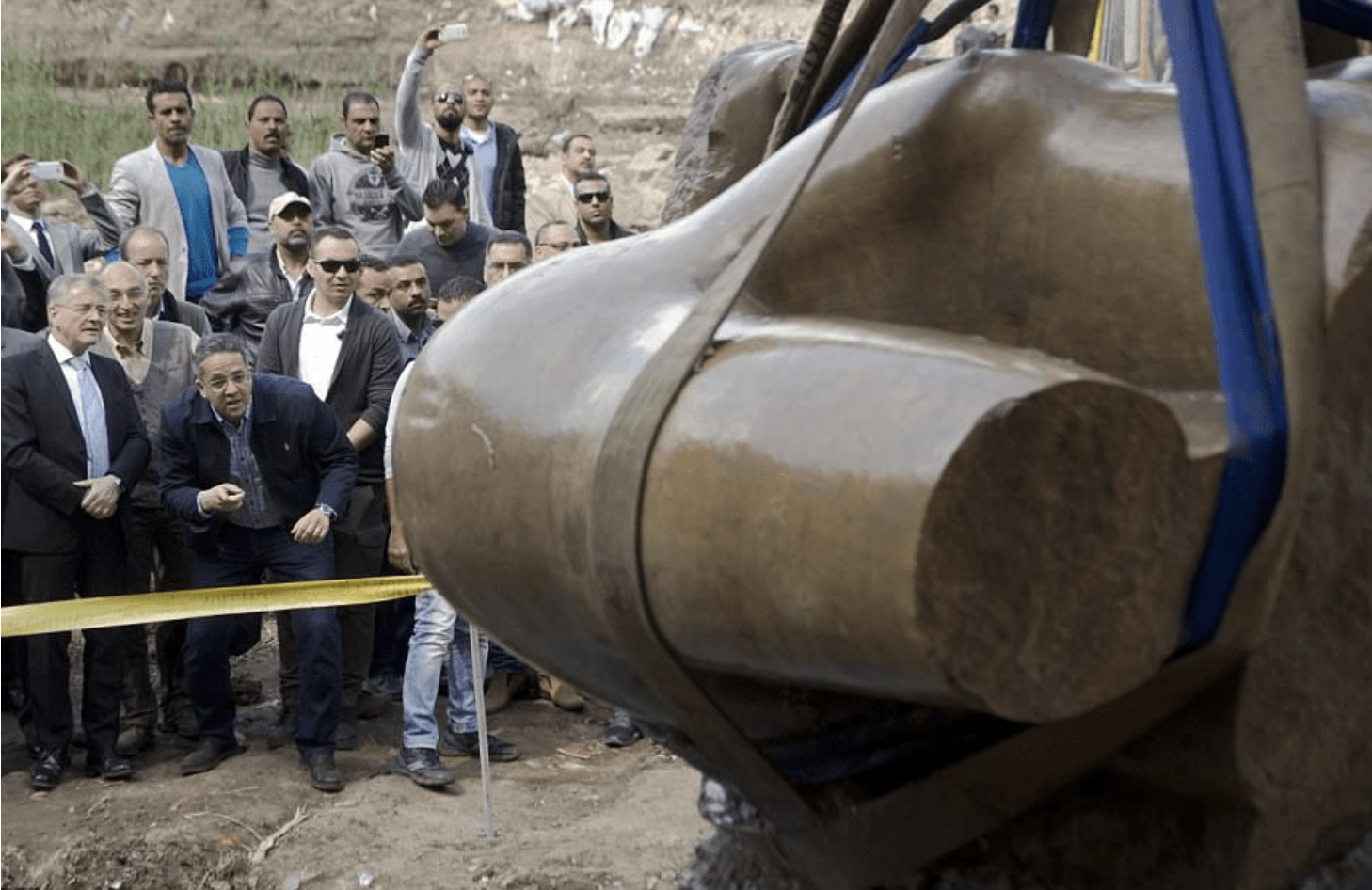
Archaeologists Lift A 3,000-Year-Old Statue Of An Egyptian Pharaoh Considered “One Of The Most Important Discoveries In History” From A Muddy Ditch In Cairo.
The imposing tribute to Ramses the Great, ancient Egypt’s most powerful ruler, was discovered beneath a muddy pit, sandwiched between two tower blocks.
Sewage and dirt were removed from the massive structure, which lay on its side in the Matariyyah neighborhood, northeast of Cairo.
The discovery, hailed by the Ministry of Antiquities as one of the most important, was made near the ruins of the temple of Ramses II in the ancient city of Heliopolis, located in the eastern part of modern-day Cairo.
Antiquities Minister Khaled al-Anani said: “Last Tuesday I was called to announce the great discovery of a king colossus, most likely Ramses II, made of quartzite.”

The most powerful and famous ruler of ancient Egypt, Pharaoh also known as Ramses the Great, was the third of the 19th Dynasty of Egypt and ruled from 1279 to 1213 BC
Ramses, a schoolbook favorite and the inspiration for Shelley’s poem Ozymandias, began to emerge just yards from where street vendors were selling on foot, the Times reported
Broken into pieces, the quartzite statue is estimated to be around 26 feet tall and 3,000 years old.
Following the discovery by a German-Egyptian archaeological team, excavators were called in to lift the enormous figure.

The chest was initially found before the jaw and a crown, the size of a small child, were also discovered.
British Egyptologist Nigel Hetherington said: “Everyone is really surprised by the scale of the statue.
“I don’t think anyone realized how dramatic it would be and there may be more to come.”
Thousands of Matariyyah residents took the opportunity to take a selfie at the location.

The statue is believed to be of Ramses due to the area in which it was found.
The working-class neighborhood of Cairo was built on the ancient city of Heliopolis, dedicated to the cult of the sun god Re.
Since Ramses, according to historians, built a temple in the area and named it after himself, it is suggested that the figure is him.
It was one of the largest temples in Egypt, almost twice the size of Luxor’s Karnak, but it was destroyed in Greco-Roman times. Many of its obelisks were moved to Alexandria or Europe and the stones from the site were looted and used for construction as Cairo developed.
Experts will now attempt to remove the remaining pieces of both statues before restoring them. If they are successful and it is proven that the colossus represents Ramses II, it will be moved to the entrance of the Grand Egyptian Museum, which is scheduled to open in 2018.

Ramses’ importance in Egypt is such that he is often called The Great Ancestor.
That’s what I always tell people here when they ask me if there’s something important. According to pharaonic belief, the world was created in Matariyyah.”
Ramses ruled for 66 years from 1279 BC. C., according to legend, and he was a military master, extending his empire to Sudan and Israel.
Next to the figure believed to be Ramesses is a life-size statue of Seti II, Ramesses’ grandson.